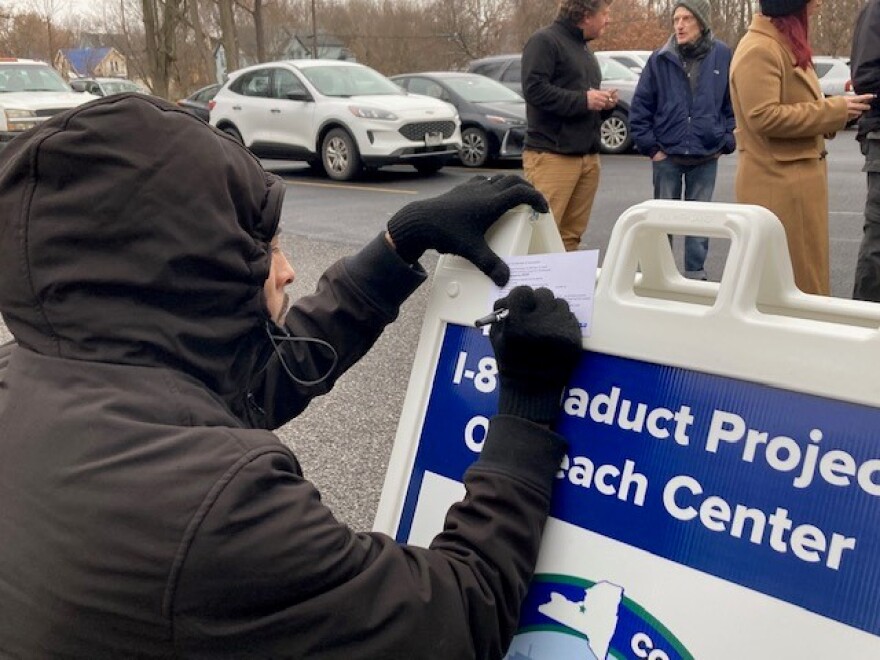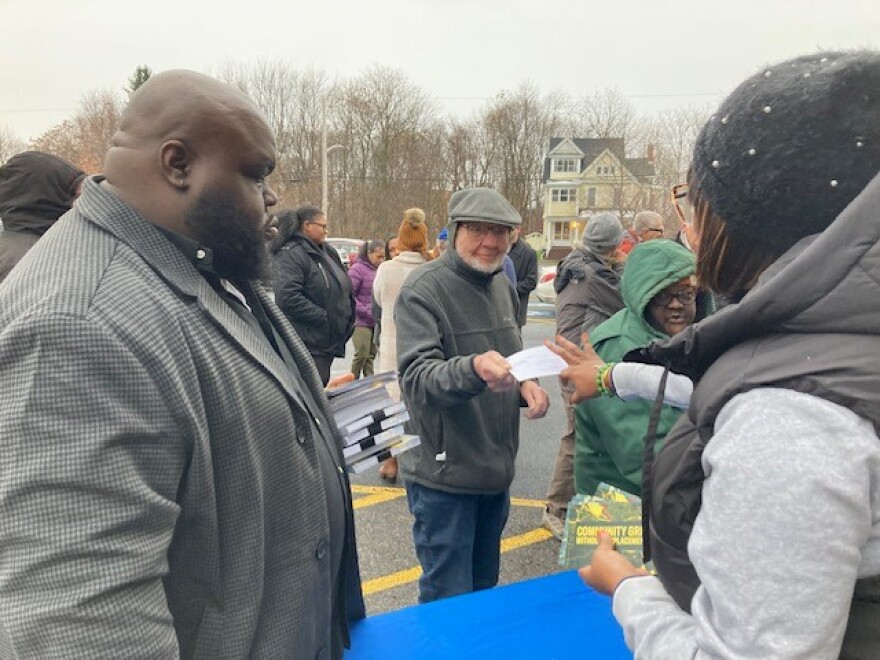Advocates and community members delivered more than 800 comment cards Thursday to the New York State DOT asking them to ensure that current residents won’t be displaced when the I-81 viaduct is replaced by a community grid. They gathered outside Tucker Missionary Baptist Church near the highway, which is also the site of an I-81 outreach center.
Director of the New York Civil Liberties Union’s Racial Justice Center Lanessa Owens-Chaplin says they want ownership of the 28 acres of land expected to be freed up when the freeway comes down.
“The question remains what will happen when that land becomes available?" Owens-Chaplin wondered. "How are we going to make sure that residents who are on a fixed income, a low income or a limited income can stay in their neighborhood as we start to see developers come into their community and develop luxury housing?”

Joseph Bryant is a Syracuse native and managing partner of a development firm. He's also co-president of the Community Land Trust, which aims to place the land in the hands of residents.
“We need to ensure that the folks that have been here before the viaduct came in and the folks that have been here for the last 60 years, suffering from disinvestment, environmental conditions benefit from this new Community grid going in,” Bryant said.
He says equity and growth of the area near the future grid largely depends on turning over the land to residents.
Ryedell Davis agrees. The Syracuse native and co-president of the land trust is also a graduate student at Syracuse University.
“We're looking to give people that live in this community the opportunity to start businesses, to live back in this community as it flourishes," Davis said. "It shouldn't be where they have to leave in order to see the good things that are available for them to have.”
Davis says residents like himself, his mother, or grandmother should be able to stay in their neighborhoods to buy a freshly baked cookie, get a decent cup of coffee, or shop for groceries at a nearby supermarket.
The NYCLU's priorities clash with that of the City of Syracuse, which wants to own and control future development of the land.




